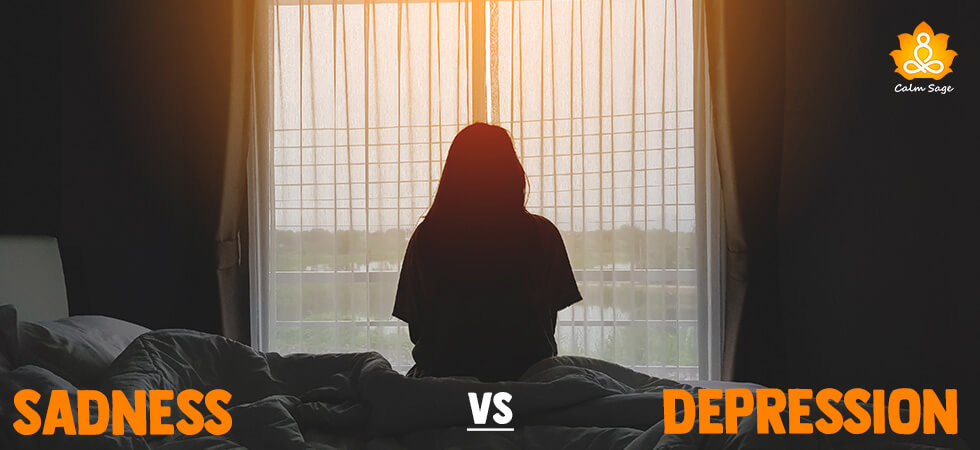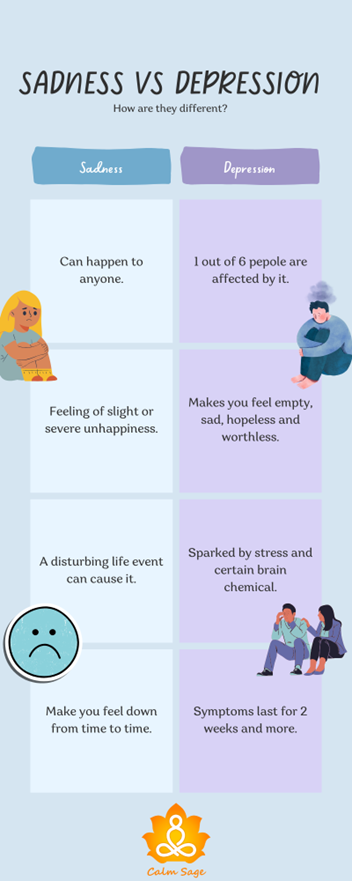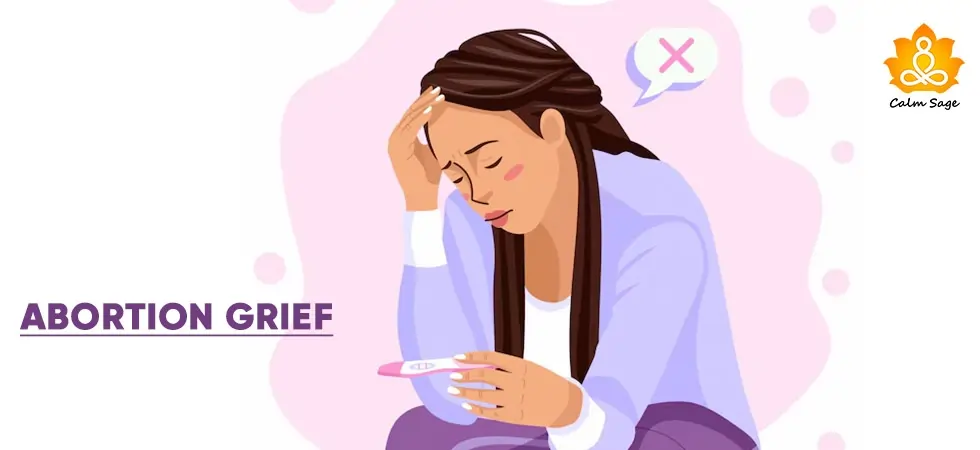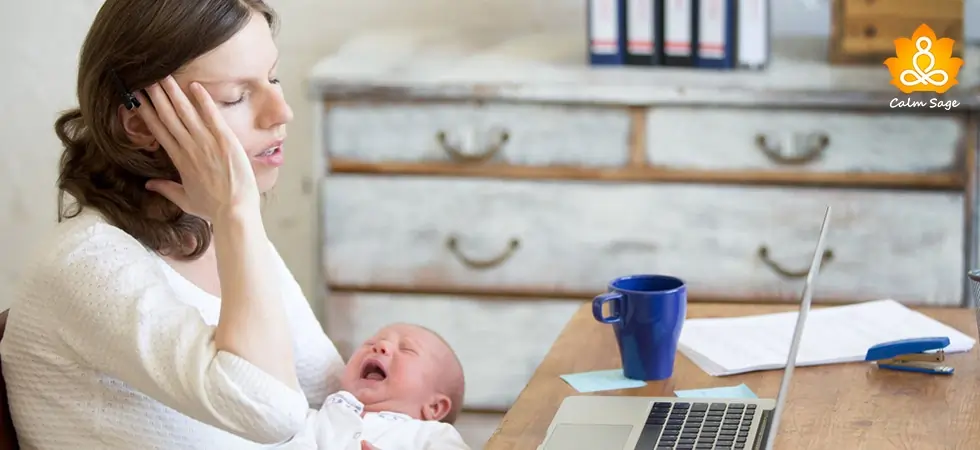Sadness Vs Depression – What Is The Difference

Feeling sad is a natural human emotion, and everyone feels sadness from time to time. When you grieve the loss of a loved one, lose a job, or are disappointed, feeling sad is natural. But when this feeling of doom stays for long and starts affecting our daily lives, it is a red flag. Depression is what we are talking about.
This mental health condition negatively affects how you feel, think, and act, making it hard to care for yourself. Luckily, it is treatable, but knowing you or someone you know is struggling can be challenging because people with depression show varied symptoms mimicking everyday emotions like irritability, lack of energy, and worry.
Hence, here we will explain the difference between sadness and depression and how you can help one in need.
What is sadness?
Sadness is an emotion every human feels at some point in their life. It’s a natural reaction to a situation that causes emotional pain or upsets a person. sadness can be felt in wearing degrees, but it is temporary and fades with time. This is what makes it stand apart from depression.
What is depression?
Unlike sadness, depression is a long-term mental illness that does not fade with time unless treated. It disrupts social, professional, and personal aspects of one’s life. People who struggle with depression find it difficult to enjoy everything dull, and they show no interest in any activities they once used to enjoy.
Depression is not an emotion like sadness. It is a mental health issue that can have both emotional and physical symptoms, thereby damaging personal relationships. It is not something you can talk yourself out or shake off.
Symptoms of Depression
If you find yourself or your loved one having the following symptoms for 2 weeks or longer, don’t confuse it with sadness. They might be struggling with depression.
- You feel hopeless, empty, worthless, guilty, or blue inside for what you have done in the past and may cry often.
- You lose the ability to find things interesting.
- You may have sleep issues and oversleep or don’t sleep.
- You feel tired, and there is always a lack of energy.
- You lose your appetite and might lose or gain a few pounds.
- You might suffer from backache and headache without any physical cause.
- You no longer care for yourself or your appearance; you dress up whether or not you are showering.
- You snap at people and feel resentful over small things.
- You might have trouble thinking or remembering things.
- You lose focus during conversations.
- You might have suicidal thoughts.
These are a few common symptoms of depression. However, you need to note that not everyone with depression has the same symptoms. Some might experience them every time, while some might show them occasionally.
DSM-5 criteria
To determine whether a person is sad or depressed, psychologists, therapists, and psychiatrists use the American Psychiatric Association Diagnostic and Statistical Manual of Mental Disorders (DSM-5 criteria). If a person meets the criteria, they can receive the treatment accordingly.
In DSM-5, 9 potential symptoms of depression are listed. The severity of ease is part of the diagnosis process. The nine symptoms are:
- Often, you feel depressed for the whole day or some days.
- The person no longer finds the activities enjoyable and interesting that they used to enjoy at one time.
- Trouble sleeping or oversleeping.
- Difficulty in eating, or eating too much, makes one loss or gain weight.
- Agitation, irritability or restlessness.
- Extreme tiredness
- Hyped feeling of worthlessness or guilt.
- Unable to focus or concentrate
- Suicidal thoughts
Difference between sadness and depression
Sadness is an emotion. Depression is a mental illness.
Emotions are what makes us human, and sadness is one such emotion that everyone feels. Sadness is felt when struggling with difficult times like rejection, losing a loved one, disappointment, etc. Depression is persisting sadness, and it is a mental illness with different symptoms lasting for a minimum of two weeks. The things you once used to enjoy are no longer interesting, and you easily feel exhausted and demotivated and even share thoughts of suicide or taking your own life.
Sadness is for a short period. Depression is much longer.
As we know, sadness is an emotion, so it is a conscious experience for a given moment, but it fades with time. However, when this emotional stage stays for long, affecting different aspects of life, it is considered to be depression. This state can last a few hours or extend for weeks and months.
It is sad if a person can feel okay or enjoy different activities and laugh during the period of sadness. However, if it is just the opposite and the person is unable to snap out of the feeling of sadness, it defines depression. In this state, thinking that you can be better seems unlikely.
Sadness is a reaction to a situation. Depression is not a general state.
Sadness results from a reaction to a painful incident. It is normal and healthy unless it starts affecting one’s life or showing unpleasant emotions. However, depression occurs without any reason. A person feels sad and detaches from all activities and the people. The point of view becomes negative, and the unreasonable feel guilty, hopeless, and helpless.
If depression starts with a specific event, the event can be the trigger but not the sole cause. In this scenario, how a person reacts is proportional to the event and can be harmful. If this is regarded, it can turn into a downward spiral.
The loss of a loved one usually causes sadness. This is why, most of the time, depression goes unnoticed. However, if this sadness persists for a long time, a person faces sleepless nights, loss of appetite, or can be disturbed by sadness. Grief is a long process, and it comes in different waves, just like sadness, but depression doesn’t.
You may find grieving individuals ready to take support, while for people with depression, this doesn’t work as they isolate themselves and don’t want to talk to others. They also experience feelings of guilt.
Sadness changes the mode for the time being. Depression changes life.
When the week is sad, or you are overburdened with work, your mood changes, and you might fall into the trap of sad thoughts. But this doesn’t affect your day-to-day work. However, if you are clinically depressed, maintaining a work-life balance or even performing daily chores becomes challenging.
Your life changes; you start cutting out from your friends and stay up all night also, there is a loss of appetite, and there is no sex drive. You might also be experiencing lower self-esteem and have lost interest in your favorite activities.
Sadness is subjective. Depression is diagnosed.
No one can deny the emotion of sadness, and it is up to the person to feel or not feel sadness. It is a subjective and independent experience. Depression, on the other hand, is diagnosed not only based on time, but certain other factors also play a role in it. To diagnose depression, a test is required; however, if you are still uncertain about whether it is sadness or depression, it is best that you keep a record of the emotion, cognition, and physical experience. It will help detect depression and treat it in time.

Risk factors
Depression is not gender or location-specific. Both men and women from different socioeconomic groups and cultures can experience it. There are several risk factors for depression, and these include:
- Early childhood or teenage trauma.
- Unable to cope with disturbing life events like the death of a loved one or any situation that causes extreme pain.
- Low self-esteem
- A family with a history of mental illness like bipolar or depression.
- Substance abuse history.
- Lack of community or family support.
- Lack of acceptance from family if you identify yourself as lesbian, gay, bisexual, or transgender (LGBT).
- Inability to deal with severe illness like cancer, etc.
- Trouble adjusting to bodily changes due to accident
- History of mental disorder
In addition to this, depression can be a result of side effects of some medicines. If you think or suspect that the drug you are taking is affecting your mood, talk to your doctor.
Some medicines that might cause depression are:
- Beta-blockers
- Corticosteroids
- Hormonal medications
- Statins, a medication used to treat high cholesterol
When to Seek help?
Suppose you find yourself or someone you know feeling sadness for over two weeks or longer. You should talk to a trained practitioner, as they can help understand what you’re dealing with. Also, if there are any suicidal thoughts, loss of appetite, or lack of energy, then they are sure telltale signs of depression.
Also, if your sadness makes you detach yourself from others, you feel a lack of energy, and everything seems hopeless, affecting life functioning, speaking to a professional is the best option. As these trained professionals are trusted and non-judgmental, you can open up to them and share your feelings. Talking to a therapist is the first step towards recovery.
Diagnosis
Distinguishing sadness from depression might not be easy for you but for a doctor using the criteria, and paying attention to signs, it becomes easy. A mental health practitioner by asking a set of questions, giving certain tests, and looking at DSM-5 criteria, can easily diagnose depression.
Also, they know how to talk to a person struggling with depression, talk to their family, and see how symptoms are affecting the functioning of day-to-day life. They will know what it feels like to be depressed. Moreover, to determine the underlying reason for the problem, the doctor can do a physical exam which can include a blood test.
Treatment
If you are sad and want to handle this emotion you can do so by making some changes in the way you look at things and live life. The changes include:
- Communicate with others.
- Take care of your physical and mental health. Join a yoga class, call someone, join a jogging group, a knitting group, or another group that interests you.
- Be grateful for what you have.
- Watch interesting TV programs or films, or read a carefree or entertaining book.
- Take part in proactive tasks or sports.
- Spend time every day with a furry friend if you love animals.
- Don’t self-cure using medications or liquor.
- Follow good eating habits and attempt to get sufficient rest.
- In the event that you experience difficulty resting, have a go at reflecting or scrubbing down before bed.
- Work on your life overall quite well.
Whether you are sad or depressed, changing your lifestyle will help in treatment. As you make changes in the way you do things, you will be able to see things differently. You will also be able to see how making changes is helping and will be able to talk to others and seek treatment.
When you encounter a time of trouble, your life changes, to bring it back to normal try to be proactive. Alternatively, look for assistance as talking to a person will help you feel lighter. On the other hand, if you feel medicine might help, talk to a doctor.
Remember depression is treatable but if you think just by changing lifestyle things will work out then you might be disappointed because you need to be diagnosed to be treated. There are chances that you can be treated by therapy or you might need both therefore, do not be your own doctor. Consult a mental health practitioner who can help, seek support, and be ready to acknowledge what you feel.
If you feel that you can’t make it, talk to someone who can understand what you are going through. You can talk to a therapist, your family members so that they can take you to the psychologist. Regardless of how you’re feeling today, you have the right to be heard. Never underestimate yourself, seek support and be okay.
Takeaway
Defeating both sadness and depression requires effort and support. By talking and seeking help from a therapist things become easy. Acknowledge that you are struggling with a problem do not hide it. Whether you feel sad or depressed you can heal. To bring change to your lifestyle set your alarm clock and wake up at the same time each day. Maintain a routine that includes self-care it will help make life more manageable.
Add some physical activity in your routine. It can boost mood and improve your health. Don’t isolate yourself. Spend some time each day with someone you like, either in person, or on the phone. Resume activities that have given you joy in the past, or try new activities that interest you. Having something to look forward to can help boost your mood.




















